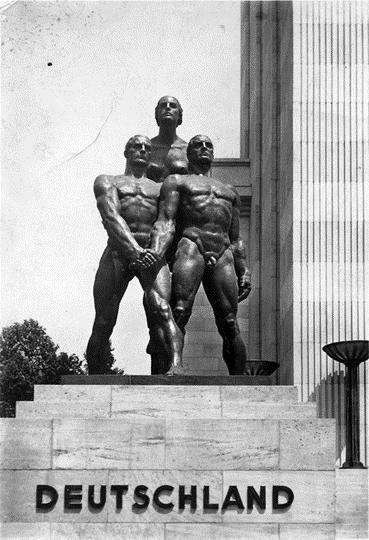Heroic realism is art used as propaganda. Examples include the Socialist realism style associated with Communist regimes, and sometimes the similar art style associated with Fascism. Its characteristics are realism and the depiction of figures as ideal types or symbols, often with explicit rejection of modernism in art.
Both socialist art and Nazi art were explicitly ordered to be heroic, and were in consequence an ideal form of the real, rather than pure realism

Heroic realism designs were used to propagate the revolution in the Soviet Union during Lenin’s time. Lenin doubted that the illiterate population would understand what abstract visual images were intended to communicate. He also thought that artists, such as constructivists and productivists, may have had a hidden agenda against the government.
Stalin understood the powerful message which could be sent through images to a primarily illiterate population. Once he was in power, posters quickly became the new medium for educating illiterate peasants on daily life—from bathing, to farming, the posters provided visual instruction on almost everything. In 1931-2, the early emphasis on the “little man” and the anonymous labouring masses gave way to the “hero of labour”, derived from the people but set apart by the scale of his deeds. As a consequence, literature filled with “positive heroes” that were sometimes tedious.
In 1934, a new doctrine called Socialist realism came about. This new movement rejected the “bourgeois influence on art” and replaced it with appreciation for figurative painting, photography and new typography layouts. Writers were explicitly enjoined to develop “heroization.” At the Paris World Fair, Vera Mukhina’s Worker and Kolkhoz Woman exemplified the ideal New Soviet Man, depicting a man and woman in working clothes, with his hammer and her sickle crossed, in a monumental statue with both striding forward.

When Adolf Hitler came to power in Germany in 1933, modern art was condemned as degenerate, and largely prohibited. The Nazis promoted a style of art based on classical models, intended to nurture nationalism. Heroic realism was to inculcate values of sacrifice, duty, and devotion. The heroic man, who was bound to blood and soil, acted rather than thought and sacrificed himself. This particularly favored the heroic death.
Nazi theory explicitly rejected “materialism”, and therefore, despite the realistic treatment of images, “realism” was a seldom used term. A painter was to create an ideal picture, for eternity. The images of men, and still more of women, were heavily stereotyped, with physical perfection.

Arno Breker’s skill at this type of work made him Hitler’s favourite sculptor. At the Paris Exposition of 1937, Josef Thorak’s Comradeship stood outside the German pavilion, depicting two enormous nude males, clasping hands and standing defiantly side by side, in a pose of defense and racial camaraderie.



